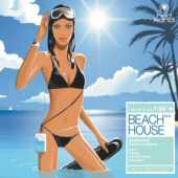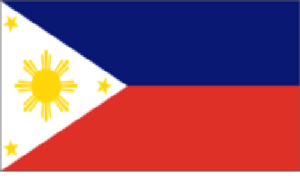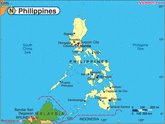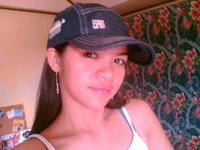
hi there! It's just another manic monday. Feel so bored. OK! ill just turn on the my media player, now playing my humps and ever after i feel like dancing....check and downloads this songs who knows u'll find yourself dancing too.......

BLACK EYED PEAS- MY HUMPS
What you gon' do with all that junk?
All that junk inside your trunk?
I'ma get, get, get, get, you drunk,
Get you love drunk off my hump.
My hump, my hump, my hump, my hump, my hump,
My hump, my hump, my hump, my lovely little lumps. (Check it out)
I drive these brothers crazy,
I do it on the daily,
They treat me really nicely,
They buy me all these ice-ys.
Dolce & Gabbana,
Fendi and then Donna
Karan, they be sharin'
All their money got me wearin'
Fly gearrr but I ain't askin,
They say they love my ass 'n,
Seven Jeans, True Religion's,
I say no, but they keep givin'
So I keep on takin'
And no I ain't taken
We can keep on datin'
I keep on demonstrating.
My love, my love, my love, my love
You love my lady lumps,
My hump, my hump, my hump,
My humps they got u,
She's got me spending.
(Oh) Spendin' all your money on me and spending time on me.
She's got me spendin'.
(Oh) Spendin' all your money on me, on me, on me
What you gon' do with all that junk?
All that junk inside that trunk?
I'ma get, get, get, get, you drunk,
Get you love drunk off my hump.
What u gon' do with all that ass?
All that ass inside them jeans?
I'm a make, make, make, make you scream
Make u scream, make you scream.
Cos of my hump, my hump, my hump, my hump.
My hump, my hump, my hump, my lovely lady lumps. (Check it out)
I met a girl down at the disco.
She said hey, hey, hey yea let's go.
I could be your baby, you can be my honey
Lets spend time not money.
I mix your milk wit my cocoa puff,
Milky, milky cocoa,
Mix your milk with my cocoa puff, milky, milky riiiiiiight.
They say I'm really sexy,
The boys they wanna sex me.
They always standing next to me,
Always dancing next to me,
Tryin' a feel my hump, hump.
Lookin' at my lump, lump.
U can look but you can't touch it,
If u touch it I'ma start some drama,
You don't want no drama,
No, no drama, no, no, no, no drama
So don't pull on my hand boy,
You ain't my man, boy,
I'm just tryn'a dance boy,
And move my hump.
My hump, my hump, my hump, my hump,
My hump, my hump, my hump, my hump, my hump, my hump.
My lovely lady lumps [x3]
In the back and in the front.
My lovin' got u,
She's got me spendin'.
(Oh) Spendin' all your money on me and spending time on me.
She's got me spendin'.
(Oh) Spendin' all your money on me, on me, on me.
What you gon' do with all that junk?
All that junk inside that trunk?
I'ma get, get, get, get you drunk,
Get you love drunk off my hump.
What you gon' do with all that ass?
All that ass inside them jeans?
I'ma make, make, make, make you scream
Make you scream, make you scream.
What you gon do with all that junk?
All that junk inside that trunk?
I'ma get, get, get, get you drunk,
Get you love drunk off this hump.
What you gon' do wit all that breast?
All that breast inside that shirt?
I'ma make, make, make, make you work
Make you work, work, make you work.
She's got me spendin'.
Spendin all your money on me and spendin' time on me
She's got me spendin'.
Spendin' all your money on me, on me, on me.
[Will.i.am]
So Real [x17]

EVER AFTER by Bonnie Bailey
Three years ago, my journey began Chasing down with you, no plan in hand Just your pulse, my raising guide in the dark Just no win with conviction from the start The moment your eyes made an introduction I found my second value in the breath of lifeFlawless to the point of being cuddly I fell all for, your imperfections
And now it’s like the weather is slightly warmer Hands gripped together, eye to eye through the storm, yeah I still believe in ever after, with you Cause life is a pleasure with you by my side And there ain’t no pourin', in this rainbow weekend ride I still believe in ever after, with you
Nothing compares to the good times Feels like were floating when the rest have to climb You made me believe in love and all the perfect kind A real messy beautiful twisted sunshine Emotions I gave it eruptions We both still care, so it’s still alive Tunnel vision, determination I want you; I want to make it right
And now it’s like the weather is slightly warmer Hands gripped together, eye to eye through the storm, yeah I still believe in ever after, with you Cause life is a pleasure with you by my side And there ain’t no pourin', in this rainbow weekend ride I still believe in ever after, with you
You are my twisted sunshine You are my twisted sunshine
And now it’s like the weather is slightly warmer Hands gripped together, eye to eye through the storm, yeah I still believe in ever after, with you Cause life is a pleasure with you by my side And there ain’t no pourin', in this rainbow weekend ride I still believe in ever after, with you
And now it’s like the weather is slightly warmer Hands gripped together, eye to eye through the storm, yeah I still believe in ever after, with you Cause life is a pleasure with you by my side And there ain’t no pourin', in this rainbow weekend ride I still believe in ever after, with you
And now it’s like the weather is slightly warmer Hands gripped together, eye to eye through the storm, yeah I still believe in ever after, with you Cause life is a pleasure with you by my side And there ain’t no pourin', in this rainbow weekend ride I still believe in ever after, with you









 Monie is from London, England. he is a 15 year old boy. i always talk to him coz he is sad about his life. he calls me mama. he is very sweet boy and a brave boy. he is now my son...he loves mickey mouse and he wants to become spiderman... i love this kid his very funny... im happy to have him...
Monie is from London, England. he is a 15 year old boy. i always talk to him coz he is sad about his life. he calls me mama. he is very sweet boy and a brave boy. he is now my son...he loves mickey mouse and he wants to become spiderman... i love this kid his very funny... im happy to have him...



 CEBU- Like many Philippine cities, CEBU, nicknamed the "Queen City of the South", has become something of an urban nightmare in recent decades, with jeepneys taking over the inadequate road network. There's history and architecture in there somewhere, but you have to look hard for it among the clutter, the exhaust fumes and the malls. The good news is that it's not half as bad as Manila. It's possible to get from one side of the city to the other in less than thirty minutes and the excellent airport and ferry connections might make you want to consider using Cebu as your base. Hotels are cheaper than Manila, taxi drivers are less confrontational, and while gridlock is not unknown, it's much less common that in the capital. The big annual attraction in Cebu City is the Sinulog Festival, which culminates on the third Sunday of January with a wild mardi gras street parade and an outdoor concert at Fuente Osmeña. The Sinulog Festival, in honour of Cebu's patron saint the Santo Niño, is almost as popular as Kalibo's Ati-Atihan and hotels are usually full, particularly for the climax of the festivities during the third weekend of January.
CEBU- Like many Philippine cities, CEBU, nicknamed the "Queen City of the South", has become something of an urban nightmare in recent decades, with jeepneys taking over the inadequate road network. There's history and architecture in there somewhere, but you have to look hard for it among the clutter, the exhaust fumes and the malls. The good news is that it's not half as bad as Manila. It's possible to get from one side of the city to the other in less than thirty minutes and the excellent airport and ferry connections might make you want to consider using Cebu as your base. Hotels are cheaper than Manila, taxi drivers are less confrontational, and while gridlock is not unknown, it's much less common that in the capital. The big annual attraction in Cebu City is the Sinulog Festival, which culminates on the third Sunday of January with a wild mardi gras street parade and an outdoor concert at Fuente Osmeña. The Sinulog Festival, in honour of Cebu's patron saint the Santo Niño, is almost as popular as Kalibo's Ati-Atihan and hotels are usually full, particularly for the climax of the festivities during the third weekend of January.
 t.
t.







 When...
When...




 (Michelle my bestbuddy)...
(Michelle my bestbuddy)... .......
....... ( we gone crazy!!!!!!)
( we gone crazy!!!!!!)